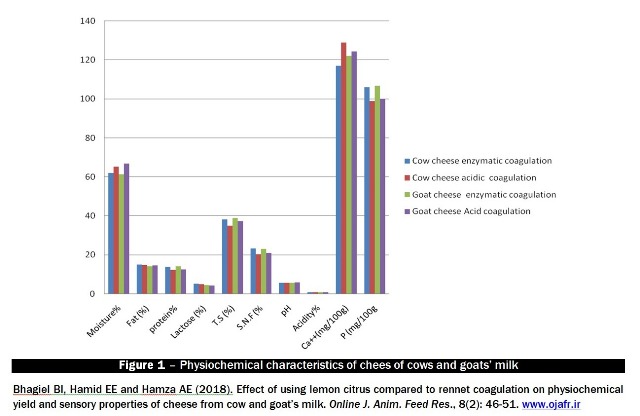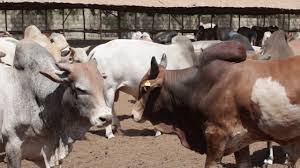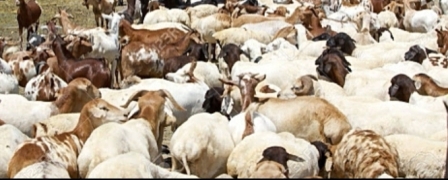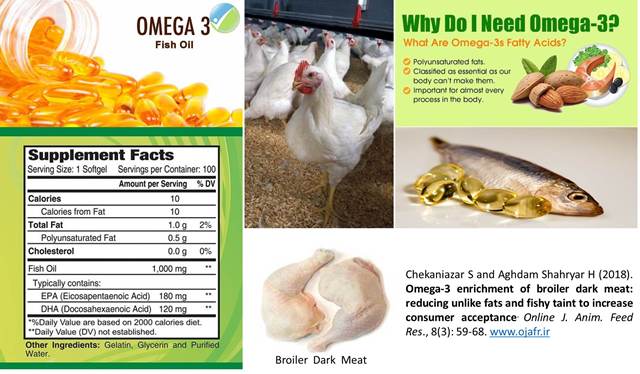Previous issue | Next issue | Archive
Volume 8 (3); May 25, 2018 [Booklet]
Effect of using lemon citrus compared to rennet coagulation on physiochemical yield and sensory properties of cheese from cow and goat’s milk.
Bhagiel BI, Hamid EE and Hamza AE.
Online J. Anim. Feed Res., 8(3): 46-51, 2018; pii: S222877011800007-8
Abstract
This study was conducted to assess the yield and sensory characteristics of cheese produced from different milk sources (cow and goat using lemon citrus juice as coagulant compared with the commonly used rennet enzyme. The milk of the two species was collected from experimental dairy farms of animal production college (Kuku) and college of agricultural studies (Shambat), Sudan university of science and technology. After pasteurization at 85 ºC for 30 min and cooling to 40 ºC, the collected milk samples were divided into four groups (each five liters of goats’ milk and cow’s milk were treated with both Rennet enzyme and citric acid (Lemmon juice), respectively. Thereafter, the samples were incubated at 38 ºC. The results revealed that Cow’s and goat’s milk that treated by rennet enzyme coagulated after one hour of incubation, while both milks treated by citric acid was coagulated immediately after 10 min. Significant differences (P ≤ 0.05) on physiochemical characteristics (protein, fat, total solids or TS, acidity, ash, lactose and solids-not-fat or SNF) between goat’s and cow’s cheeses were obtained. It was observed that cheese manufactured from goat’s milk using citric acid aggulation recorded higher protein, fat, ash, T.S, pH and TNF, percentages, while acidic cow’s cheese showed high moisture, lactose, and acidity. While, enzymatic goat’s cheese revealed high percentages, of protein, fat, ash, TS, Ca and acidity, and enzymatic cow’s cheese revealed high moisture, lactose, SNF and Phosphorus percentage. The sensory evaluations showed significant (P ≤ 0.05) differences on taste, flavor, smell, texture, and overall acceptability. The best values for taste, color and overall acceptability were obtained from enzymatic (rennet) goat’s cheese followed by enzymatic (rennet) cow’s cheese, then acidic (citric) cow’s cheese and acidic (citric) goat’s cheese was the last. The perfect hardness and texture were obtained from enzymatic (rennet) cow’s cheese. Moreover, the best smell was recorded for the cheese produced from cows’ milk by enzymatic curdling. Where, the most acceptable flavor was attained by the cheese processed from cows’ milk by citric acid coagulation. The results indicated that the weight of the final products obtained from cows’ and goats’ milk using citric acid coagulant was higher than that obtained from the same milks using rennet enzyme coagulant. It is possible to conclude that lemon citrus juice can be utilized as an alternative coagulant in production of local Sudanese white cheese for high yield and short curdling time which performed favourably with the commonly used rennet enzyme.
Keywords: Lemon Juice, Rennet, Coagulation Cheese Processing, Cows, Goats, Milk
[Full text-PDF] [XML]
Challenges and market opportunities of cattle fattening around Gondar town, Ethiopia.
Birhan M, Adane K, Abebe Z And Habtie B.
Online J. Anim. Feed Res., 8(3): 52-58, 2018; pii: S222877011800008-8
Abstract
A study was conducted to assess cattle fattening opportunity, challenges and marketing system from January to May, 2017. The primary data was collected from purposively by interview in selected 50 cattle fattener households. According to the respondents, information color was the major selection criteria for fattening purpose with the proportion of 28% red coat and 10% for bulla (mixed color), 8% for white and 44% for black colors, whereas castration of animals was another fattening criterion for in the study area. Accordingly, about 6% of the respondents were fattened the castrated animals while the remaining 94% were the uncast rated bulls. Almost all respondents indicated that concentrate (10%), roughage (8%) and both concentrated and roughage feeds (82%) were the used feed sources for fattening purpose. Deciding finishing period of fattening cattle in the study area were based on live weight change (58%), by calculating feeding length (4%) and 38% of the respondents were used both. Market information is a crucial issue to reduce information gaps and uncertainties that existed in the livestock sector. The price of fattening cattle depends on weight and age of the animals. Lack of capital (40%) was the main constraint to begin cattle fattening and other constraints were shortage of feed and water, insufficient land, occurrence of disease and lack of awareness in order of importance 26.67%, 16.67%, 10%, 6.67%, respectively. And the opportunity of the area is also livestock access, meat demand of people increase and butchers house. Therefore, from the present study, it can be concluded that cattle fattening in Gondar town is one of the potential strategy to improve the livelihood of the family and had a good potential of market flow.
Keywords: Cattle Fattening, Constraint, Opportunity, Challenges, Opportunity
[Full text-PDF] [XML]
Small ruminant production systems and breeding programs in Ethiopia: achievements, challenges and lessons learned: a Review.
Sheriff O and Alemayehu K.
Online J. Anim. Feed Res., 8(3): 59-73, 2018; pii: S222877011800009-8
Abstract
Indigenous small ruminants (sheep and goats) in Ethiopia are very important sources of both tangible and intangible benefits to resource-poor farmers. To date, the country has more than 60 million heads of shoats raised in different production systems, yet their productivity and contribution to the agricultural and national economy is far below the potential. Limited genetic potential has been identified as a major constraint to increased productivity. Various small ruminant genetic improvement programs, aimed at improving the productive and reproductive performance of indigenous breeds, were therefore implemented in the country. Crossing local breeds with their exotic contemporaries was one of such programs commenced since 1944 on sheep and the mid-1970s on goats. Due to different reasons, however, the small ruminant crossbreeding programs in Ethiopia did not deliver the anticipated benefit to smallholder farmers and hence many of the crossbreeding programs were failed. Following the tragic and fruitless ending of small ruminant crossbreeding programs, centralized nucleus-based selection programs were then implemented widely in different parts of the country with the objective to achieve highly productive and prolific genotypes. Despite several efforts made towards this end, the selection programs in various nucleus centers did not provide the desired genetic improvements and generally yielded unsatisfactory results. As a result, a viable option that fits well with the prevailing low input production systems was therefore required. One such option that has recently stimulated a global interest was community-based breeding program. The program was implemented and tested in Ethiopia as early as 2003 on the adapted local breeds in four regions across the country. It had a promising start and by now it realized several achievements. Hence, the program should be part of the national livestock breeding policy.
Keywords: Breeding Programs, Ethiopia, Production systems, Small ruminants
[Full text-PDF] [XML]
Omega-3 enrichment of broiler dark meat: reducing unlike fats and fishy taint for consumer acceptance
Chekaniazar S and Aghdam Shahryar H
Online J. Anim. Feed Res., 8(3): 74-83, 2018; pii: S222877011800010-8
Abstract
Fish oil (FO) rich in the long chain n-3 polyunsaturated fatty acid (LC n-3 PUFAs) such as eicosapentaenoic acid (EPA, C22:5 n-3) and docosahexaenoic acid (DHA, C22:6 n-3) play substantial roles to improve FA composition and enhance health-related effects of animal products like meat, dairy and eggs. However, optimization based solely on omega-3 enrichment could lead to undesirable odours in animal-source foods, unless the FO withdrawal period is applied for 1 week before slaughter. The aim of study was to investigate whether the replacement of FO with poultry fat (PF) in the diet for 21 days followed by its withdrawal for 1 week affected fishy taint of thigh meat, cholesterol (CHOL) and triglycerides (TG) concentrations, n-3-enrichment and growth rate of male broiler chickens. Two hundred and forty birds (21-day-old, Ross 308) were fed 1 of 4 dietary groups (T1=3%PF, T2=2%PF+1%FO, T3=1%PF+2%FO, T4=3%FO) during a 21-d growth period. Broilers fed dietary fish oil indicated an improved rate of growth (P < 0.01) plus a decline of the CHOL and TG levels as well as the n-6: n-3 ratio in thigh meat. Moreover, amount of LC n-3 PUFAs especially EPA and DHA were increased and hence a lower monounsaturated FA: PUFA ratio was detected on day 42 and also after oil/fat withdrawal from the diet. The juiciness and tenderness of dark meat of broilers fed FO dietary groups were raised. But the fishy taint was unfavorably higher (P < 0.01) especially in T4 meat that affected flavor and acceptability thereof. The dissatisfaction of the panelists toward cooked samples of T4 scored as neither like acceptable and their satisfaction with group 3 meats scored as good. Since the lowest n-6/n-3 FAs and a good growth rate were also observed for 1%PF+2%FO (T3), group 3 meats were selected as good-quality omega-3 enriched broiler meat. It is concluded that pre-slaughter withdrawal of replaced fish oil in broiler diet seems ensure the good performance, n-3 enrichment of thigh without probable off-flavors or unlike fats (CHOL and TG) of dark meat.
Keywords: Broilers, Fish Oil, Fatty Acids, Cholesterol, Thigh Meat, Sensory Quality
[Full text-PDF] [XML]
Previous issue | Next issue | Archive
This work is licensed under a Creative Commons Attribution-NonCommercial 4.0 International License.
| < Prev | Next > |
|---|







